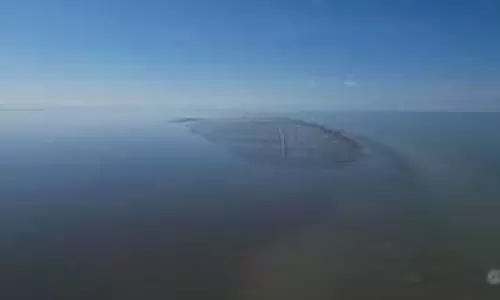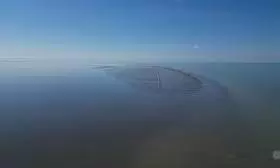
New island emerges in Caspian Sea amid falling water levels
text_fieldsA newly formed island has appeared in the northern Caspian Sea, providing scientists with a valuable case study of how climate change and tectonic activity are reshaping the world’s largest inland body of water.
Russian researchers confirmed the discovery following satellite observations from late 2024, which showed a new sandbank breaking the surface.
A field expedition in mid-2025 verified the formation, located around 30 kilometers southwest of Maly Zhemchuzhny Island, straddling the Europe-Asia boundary. The island is barely elevated above sea level and was exposed as water levels in the Caspian Sea dropped to some of the lowest seen in recent decades.
“In November 2024, satellite images showed a pile of sand and sediment poking above the sea surface,” researchers noted in a translated statement. When a scientific team arrived on-site via a research vessel, they spotted a low, sandy stretch barely emerging from the sea. However, shallow waters and rough weather prevented them from stepping onto the islet.
Instead, quadcopter drones were deployed to capture aerial images. These photographs confirmed the island’s size and contours, showing a wet, sandy surface marked by shallow ridges and entirely devoid of vegetation.
The formation of this island sheds light on the Caspian Sea’s shifting landscape. Scientists attribute the falling water levels to a combination of regional tectonic changes and climate-induced evaporation. The sea level has been gradually declining since the 2010s, accelerating a trend observed for several decades.
Similar temporary formations have occurred in the past, including those associated with the Kumani Bank mud volcano near Azerbaijan. These emergent features often vanish or evolve as water levels fluctuate, but their appearance offers valuable insight into the region’s dynamic geology and ecology.
Though currently uninhabitable and unstable, the island could become ecologically significant. Experts suggest it may serve as a nesting site for seabirds or a resting ground for Caspian seals, depending on its longevity. “The island’s fate will help scientists understand the interaction between Caspian water levels, climate change, and Earth movements,” researchers added.


















